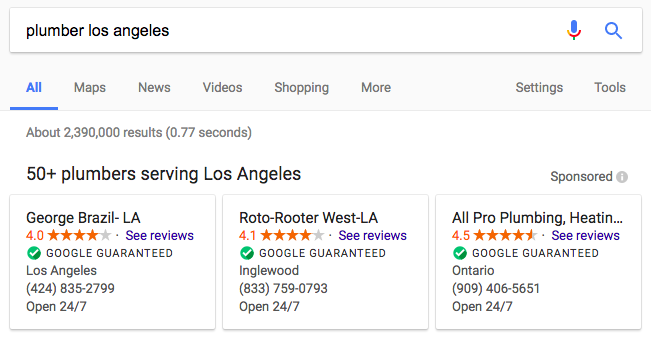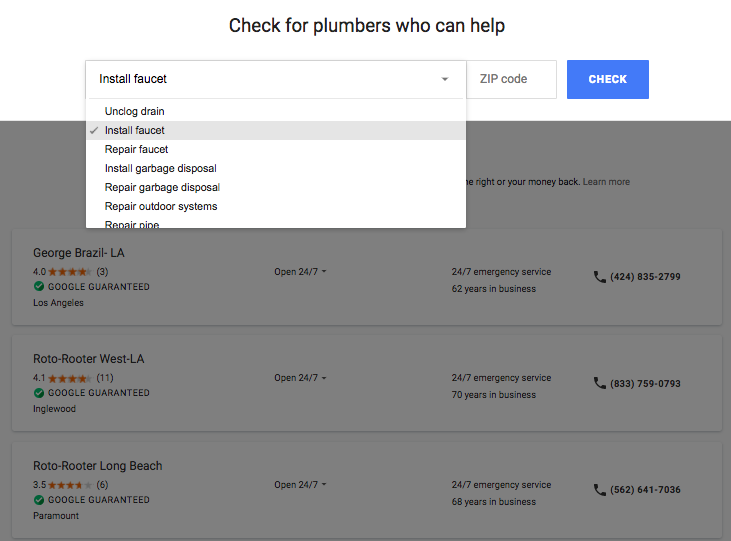How to Use Social Media in 2018 written by John Jantsch read more at Duct Tape Marketing
Marketing Podcast with John Jantsch About Social Media
I thought I’d drop in and give you my take on where we are with social media. It hasn’t gone away, it hasn’t died out, it has a place, and it’s here to stay, but let’s talk about how to use it in 2018.
It’s kind of funny, but some of the questions that I got when social media was brand new I’m still getting today:
- How do I find time to do it?
- What’s the ROI?
- How do I make it pay?
- Can I sell?
Those are the things that people asked in 2012 and 2013, but those issues haven’t gone away because people still see social media as this disconnected piece of marketing that you have to go figure out and play in.
The one thing that I said in 2012 and I’ll say it today, is that you need a strategy for social media.
Social media is just another channel, it is another part of marketing. So how does it fit into your overall objectives? You may actually end up realizing that you are wasting your time in a lot of what you’re doing with social media because it doesn’t help get your objective of growing your business or getting more clients or the things that we tend to want to do in marketing. I think a lot of people bought into, “I have to be there, I have to be in all these new places or I’ll be left behind.” In some cases, your clients aren’t there and you can’t physically participate and do well there without watering down your other efforts.
Why businesses use social media today
Let me ask you this, what’s the main reason you use social media today? My guess is, some of you are going to say, “I don’t really know,” and I think that’s probably the most honest answer. I can tell you that brand awareness and community engagement and content distribution are the biggest reasons that people use social media today. Sales, lead generation, and customer support are not far behind because those are the things that we want to do the most, but I think you have to realize that there’s a place for social media today and you just have to understand where that is.
On the flip side, I read a statistic recently that 46% of consumers made a purchase as a result of watching a brand video on a social network, so it does have the power to help you meet your objectives. I think the thing that has become painfully clear today that maybe wasn’t a few years ago, is that it’s really not about the tools or the platforms. It’s really all about meeting your objectives.
How to meet business objectives with social media
So how could social media meet your business objectives? Well, first you have to outline what those objectives are. Is it to get a certain number of new clients, is it to launch into a new service area? Is it to launch a brand or a new product campaign?
If you think about those as some of your objectives then you could start saying, “Okay, well how could we tie that then to marketing objectives,” because sometimes it’s very difficult to go from launching a new product to how does Twitter help us do that? If you think about some of the marketing objectives, like:
- Increasing awareness
- Driving traffic
- Re-engaging current customers
- Generating leads
- Growing revenue
- Boosting engagement
- Building community
- Social selling
Those are marketing objectives that actually can be accomplished quite nicely through the right use of social media today.
Think for a minute. What would be your top three marketing objectives for 2018? Once you have those, it’s simply a matter of saying, “Okay, how could social media help me do that? Okay, here’s a list of specific tactics that we are going to use in order to have social media do that.”
Let’s say, you want to expand into a new market segment. Well, the strategy for that might be to use social media to discover and build relationships with influencers and so then you could just break that down to a project. Create a list using Twitter lists or using something like BuzzSumo.
Find the influencers, make it a plan to reach out to 10 of them a day about potential partnering. You just break it down into very specific things and just ask yourself again and again, “How can social media help me do that?” You may have noticed by now, I haven’t mentioned a single platform yet. I will actually get to that but I think that this is the element that is missing, that we don’t understand how we’re going to use it and why we’re going to use it so that we can make these proper decisions about when and where. What are some of the tactics or some of the things that you can do in social media based on the stages of the buyer’s journey?
For example, for our stages, I talk about the Marketing Hourglass; know, like, trust, try, buy, repeat, and refer. I’ll even add an eighth step to that. For a lot of companies, social media can be great for hiring as well. Paid social, paid Facebook ads, and paid LinkedIn ads can be a really great way for people to come to know you or know about your content. There’s no question that showing a personal side on a social platform is a way for somebody to kind of identify with or like your brand.
Telling stories in social media is a great way to build trust, which is a step we need. You can make offers for certain types of businesses having a special or a sale or a holiday event as long as you are providing value and engagement in other forms. This is a very legitimate way of using social media. Doing things once somebody buys from you, like creating a Twitter video and just saying, “Hey Bob, we really appreciated working with you.” Or, “Hey Bob, here’s your finished product. We’re shipping out today.” That kind of stuff is a great use of social media to generate repeat business.
Then, there are all kinds of ways that you can use social media. Say, creating a Facebook group of your customers or your champion customers and creating something special or different or unique or custom for them. Then from a hiring standpoint, the greatest thing is most of your employees are on social media so you can use their networks, in some ways, to help recruit and maybe create some sort of formal program. If you think about using social media not as just this megaphone that gives you an audience but for your very specific marketing objectives, business objectives, and then meeting certain intent throughout the customer journey, you can develop a strategy that makes some sense.
How I approach social for my business and myself
I’m going to wrap things up by just talking about a couple things that I’m doing. People, for some reason, like to know what tools I’m using or what platforms I’m using. I will say, for a marketing consulting business like mine today, we are focused primarily on Facebook and Instagram. We certainly participate in LinkedIn, but Facebook and Instagram are the ones that we spend more time because we feel like we can get the best type of engagement. We have limited resources so we want to go deeper in a couple places.
With the days of auto-publishing everything and going out and curating hundreds of posts, and making sure that you’re posting three times a day, Facebook has basically said, “We don’t want that. We don’t think that’s worth very much. If you do that we’re not going to show your content to very many people.”
Really, the approach that we have taken in Facebook is we want to promote on the business page. I have a personal page and a business page and those two both serve a business function for me. The personal page is more on the personal side of John Jantsch, the author, where the business page is meant to be more straight up Duct Tape Marketing stuff. Now, there’s some crossover upon occasion but that’s how we try to split it up. Now, as far as content goes, about 30% of the content is our ongoing content, the content that we’re producing on a daily and weekly basis.
About 25% is curated content from other sources, 25% is straight up business goals so we’ll promote a product, I’ll promote a webinar, I’ll promote something that I’m doing that I want people to take advantage of because they may opt-in. It’s straight up business goals that we’re trying to meet. We will boost or advertise most of the content. Then, we like to look at, say, another 25% is about people, and culture, and personal observation. We round that out with our ongoing content that is on our editorial calendar. A fourth is curated from other sources, a fourth is aimed at meeting our business goals, and about a fourth is just people, culture, goofy stuff. That’s the mix that we like to go with on Facebook right now. Seems to be a good mix to create engagement and to create views, and to create comments. Then, we do put routine or consistent advertising into Facebook as well, primarily as the two categories of our own ongoing content and of the content that supports our business goals.
As far as Instagram goes, Instagram recently introduced a business page type of account. You get some more insights and you get access to the advertising platform. I was on Instagram very, very early on and so I had an account that I just called Duct Tape Marketing. I used it as much as anything as a personal account but it had the Duct Tape brand.
I converted that to a business page and then I created a new page, John Jantsch, that I am sharing my primarily personal rambling of travel pictures and things of that nature and then sticking with promoting things much like we do with our Facebook content on Instagram on the business page. I recommend that you look into creating an Instagram business page if that is a platform for you.
Tool to consider
As far as tools go, I am and have been for many, many years a big fan of Buffer. I think Hootsuite is still a great tool for publishing your content as well. I find myself actually publishing directly on the platforms now. It’s not maybe as efficient but I think you get the most bang for your buck.
Facebook seems to like you to do that, especially if it’s videos or native videos or native photos that you’ve uploaded from your computer. Those seem to get shown more than anything else.. Facebook and Twitter actually have some pretty good insights. Now when you go over to the business side on Instagram you’ll actually get some analytics there. Really, from an engagement standpoint either Buffer or Hootsuite are really great tools to monitor and respond and things of that nature.
That’s kind of my take on where we are in social media. It’s all still about meeting objectives, both business and marketing objectives, and looking at the platforms that really allow you to do that. Again, I think half of these tools that are out there will do most of what you want and so it’s a matter of making a determination about the business objectives and marketing objectives you’re trying to meet. Just set up campaigns, set up tactics that are based on your strategy and you will ultimately win.
Answer this one question really if you’re trying to make a decision about social media today is: is the use of this tool or this practice or this tactic going to benefit my customers? I think if you can say “yes” to that, then you will always find a return on investment.
![]()
Powered by WPeMatico



